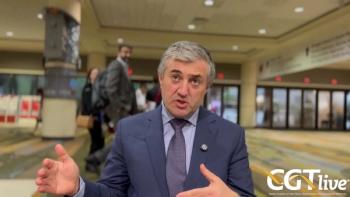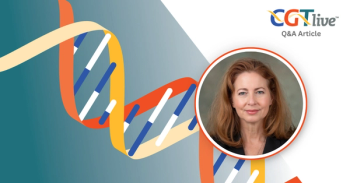
Targeting the Putamen in AADC Deficiency: Paul Wuh-Liang Hwu, MD, PhD
The professor from National Taiwan University Hospital discussed the benefits of delivering gene therapy directly to the putamen in AADC deficiency.
"More aggressive, systemic treatments... can cause liver damage and damage other cells. In comparison, we deliver not very vigorously spreading virus by local injection [to the putamen]. The treatment is just involved in that region and does not spread out too much. That is safer and more effective.”
PTC Therapeutics recently announced updated data from a 5-year analysis of 3 clinical trials assessing PTC-AADC, a novel gene therapy delivered to the putamen for the potential treatment of aromatic L-amino acid decarboxylase (AADC) deficiency. The analysis showed improvements in development, motor skills, and cognition in treated children with AADC deficiency.1,2
Results from the analysis were presented at the 50th Child Neurology Society (CNS) Annual Meeting, September 29 to October 2, 2021. Investigators found that across trials, treated participants reached milestones not usually seen in the natural history of AADC deficiency, including being able to hold up their heads and sit or stand with support as early as 3 months after treatment. Communication skills also improved, as measured via Bayley-3 scores.
GeneTherapyLive spoke with investigator Paul Wuh-Liang Hwu, MD, PhD, professor, pediatrics, National Taiwan University Hospital, to learn more about the putamen as a target for gene therapy in AADC deficiency.
REFERENCES
1. Results show long-lasting and holistic improvements in children with AADC deficiency treated with PTC-AADC gene therapy. News release. PTC Therapeutics. September 29, 2021. https://www.prnewswire.com/news-releases/results-show-long-lasting-and-holistic-improvements-in-children-with-aadc-deficiency-treated-with-ptc-aadc-gene-therapy-301387687.html
2. Hwu PWL, Kiening K, Anselm I, et al. Gene therapy in the putamen for curing AADC deficiency and Parkinson's disease. EMBO Mol Med. 2021;13:e14712. doi: 10.15252/emmm.202114712
Newsletter
Stay at the forefront of cutting-edge science with CGT—your direct line to expert insights, breakthrough data, and real-time coverage of the latest advancements in cell and gene therapy.
















































